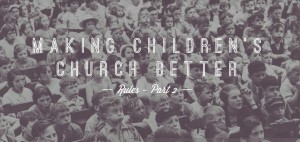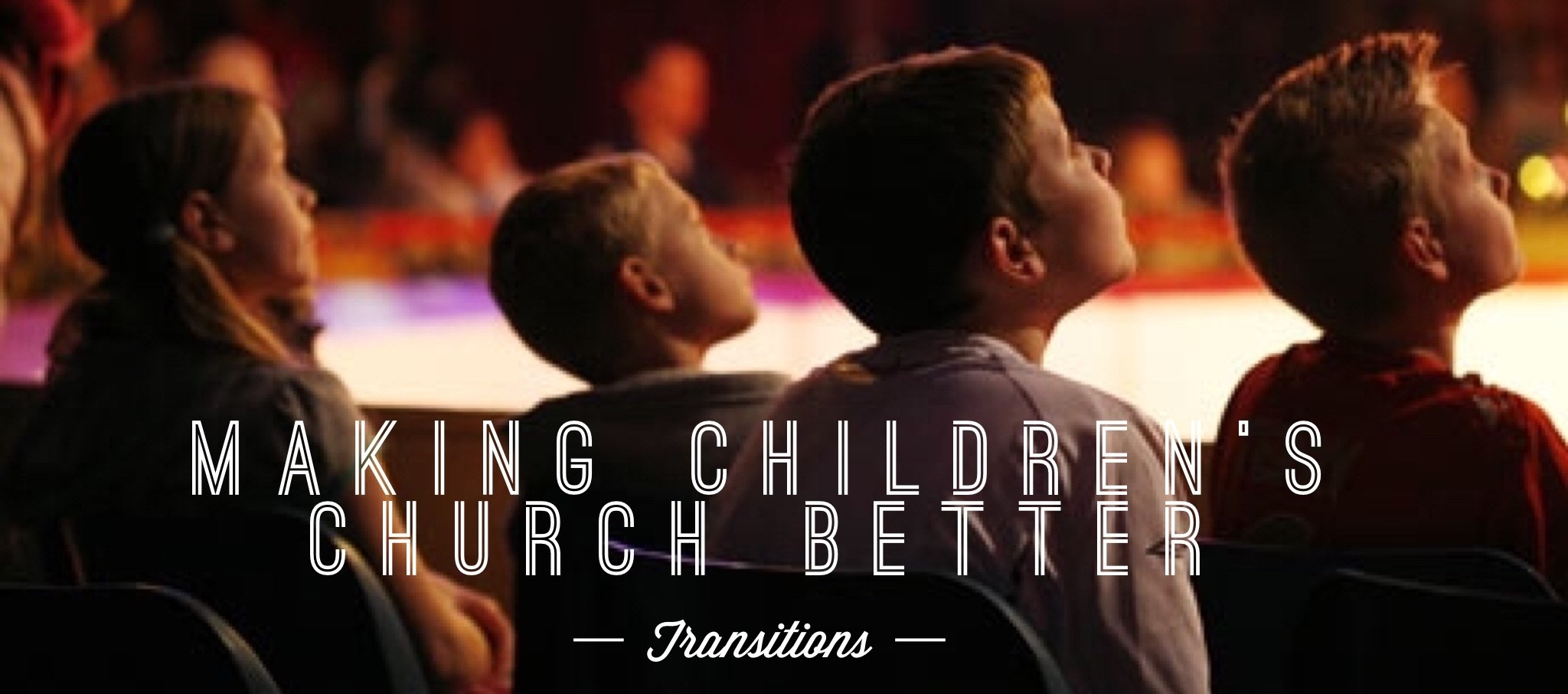
Here are the resources related to my session called: “BRING IT TO LIFE” the session was all about adding illustrated methods and variety to your children’s ministry services and classes.

Here are the resources related to my session called: “BRING IT TO LIFE” the session was all about adding illustrated methods and variety to your children’s ministry services and classes.

Here are a few things you can do to make a child’s day in your KidMin:
 If you’re like me (and I know I am), you put a lot of emphasis on teaching kids the Word of God every week – and in some cases, several times or venues a week.
If you’re like me (and I know I am), you put a lot of emphasis on teaching kids the Word of God every week – and in some cases, several times or venues a week.I was on staff at a church and had 4 Kids’ Church large groups on a weekend. Add to that a Sunday School hour, Wednesday night large groups (of which I’m involved) and Wednesday night small groups. We also have a myriad of classes and services for toddlers and preschoolers and even some teaching time for infants that our wonderful staff on directors and volunteers oversee and participate in.
THERE’S A WHOLE LOT OF TEACHING GOING ON!
Let me encourage you this week as you plan for the upcoming Wednesday or Weekend and give you a pointer that I just know will give you the confidence and in some cases the “know-how”… and if there’s anything I’ve learned in the last few years: INFORMATION is POWERFUL when you APPLY IT.
Start preparing early in the week for the upcoming lesson or class time. In other words, if your ministry time was over the weekend, crack open that lesson book or materials on Monday… if your ministry time was on Wednesday; then make Thursday your day to start studying. You don’t have to plan your entire lesson on that day, but at least:
…When you start early in the week, it gives the Holy Spirit time to be your helper… instead of (gulp) having to work in spite of you. Think about it: all week long as you pray over the materials you’ve read, the Lord will reveal unique teaching ideas, stories you’ve heard or events in your life that you could work into your lesson. As the day of ministry gets closer and you are planning what that class time should look like, instead of saying, “Lord, what am I going to teach?” …you’ll be able to say “Lord, how do I fit all of these ideas into the lesson?”
Try it – I promise it will work. And as always, if you ever need a teaching idea, I’m just an e-mail away and I’m happy to brainstorm with you! I’d better let you go – some of you need to start studying!

I believe in it! It’s a place where kids are gathered corporately and worship, learn and fellowship. Those of you who have a Large Group/Small Group format can still benefit from this information as well as those who have a major emphasis on a children’s worship service – AKA: Children’s Church.
One day, while studying to teach on this topic once again at a conference, I realized that the children’s church service was a hybrid of several models. The Children’s Church has mix of the following elements:
This model has been used for years and is like a mantra to classic and succesful educators:
I came across this a few years back after watching Duane Laflin speak about the psychological needs of an audience:
I’ve used this for years to help structure how a childrne’s church should look:
I hope you can see how each of these models kind of “morphs” together to create a good structure for a children’s church setting.
 It Starts When They Walk In…
It Starts When They Walk In……Before you can start the 5 minute countdown, make a grandiose announcement, send in a crazy character, start your Bible on fire, or eat donuts suspended from a rope, we need some kids to come thru the doors. If the kids don’t show up, you’d be starting your Bible on fire for, well… nobody.
But what can you do to keep kids from getting bored from the moment they come into your ministry area?
Have I given you something to think about? BTW: You can buy a Bible that starts on fire here… I use mine all the time!

Want some harsh but honest criticism? Read on… if you’re feelings are easily hurt, then skip down to the next point and take the chance that you will still have issues with children following the rules.
You’re still here. Ok, ready?
…sometimes kids behave the way they do because they are bored and disengaged with what’s happening around them. Be a more exciting teacher, storyteller, announcement person, offering presenter, welcome guy, etc. Whatever your segment is, make it as fun, interesting and/or exciting as you can.
It’s not enough to just point-out to a child that they’re being naughty. You can often times change the atmosphere and give the rest of the audience reason to suddenly sit-up, sit still, listen, smile, etc. It’s called recognition. And it works. Every kid wants to earn an “A”… every kid wants to be noticed for doing good. When I sense there seems to various children chatting with each other and squirming about. I start my segment by “noticing” a child and making a big deal about their behavior:
“Hey everyone look over here at Chloe! Chloe, you are doing such an great job sitting up and paying attention. I love how you do that… you’re an amazing kid.”
Suddenly, every kid will want to meet your expectation.
Incentives have often times been misinterpreted as “bribes”. Perpetuating the statement: “I don’t want to bribe the kids to behave.” I understand…
…but, a bribe is defined as a payment offered to someone to do or allow something evil.
I define an incentive as a reward. I love to reward kids. But, I don’t offer incentives every time I teach children. You would need to decide for yourself if you should ever offer rewards… what those rewards should be… and how often would a reward be offered.
I enjoy giving out rewards that relate to our series. We did a back to school series – we gave away various school supplies and the kids loved it as equally as when we did an entire series that used a different kind of candy each week so we gave away that particularly kind of candy. We didn’t always just hand it to kids who were well behaved. Sometimes, you could be chosen to answer the review questions or play the review game and we would reward the players of the game. You might consider reserving prizes for special days or when you realize after a few weeks of children not paying attention, you need and incentive to offer to kids who are engaging in the service.
It should go without saying – you’re there to pastor the kids, not be an enforcer. The rules, like any teaching method, should only help enhance the ministry that’s already taking place in your service. I like kids to know I’m firm, but fun… fair and even flexible. I would rather just remind kids of rules and focus on teaching the Word of God.
Next time, (and I promise that part 4 will be last of the “rules” posts) I will give you some tips and ideas for those times when you need to enforce the rules or just remind kids of the rules while you’re still teaching. Thanks for all the great feedback during this series. Please share on Facebook and Twitter – and please comment.
 Rules are not a fun subject – but I believe they are necessary!
Rules are not a fun subject – but I believe they are necessary!Regardless of the lack of actual comments on the last post – I was encouraged with the feedback from twitter, Facebook and with personal messages from friends, and fellow KidMin leaders. Hey, I even got a shout-out from the Kids Pastor at our church during children’s church while she reviewed the rules with the kids 🙂
Here we go with Part 2:
That’s why I have a rule that says: “Obey All Rules”. It gives us license that if we need to make a rule to help the kids learn, we will. If a leader has noticed a lack of participation with our worship times in previous weeks, he/she can say something like: “Today we are adding an extra rule… it’s called ‘Everyone Participates’. If it’s time to sing, we want everyone to sing, if it’s time to learn, we need everyone paying attention…”
You wouldn’t dismiss a child from your service with a harsh lecture in front of the other children should that child break a rule and it’s their first infraction…. would you? Of course not. It’s not fair.
Let’s face it: kids get excited and will respond with outward expression. If something exciting happens and kids exclaim: “WOW!” cool – it’s what we want. Right? We want children engaged – so make sure you and your leaders can discern when the breaking of rules is a reaction to what’s happening —OR— it’s a problem of the child just doing whatever they want and it’s distracting or interruption the service.
I tend to allow 2-3 personal, verbal warnings from a leader who is not teaching. After that, the child is moved back a row or 2 (I always try to move a child back —OR— off to the side if they are already a few rows back). This is usually serious enough in the mind of the child that they will try harder to follow the rules. If the child is still having a hard time, I have them moved to the very back row (we keep the back row of one of the sections reserved for this purpose). The child is told that before he/she can leave that they will need to have a short meeting with their parents and a leader.
There have only been a few rare cases in which we had to dismiss a child by calling their parent during the service.
By handling the consequences this way, it’s fair because the child gets to remain in the room and receive ministry and participate in worship. It’s fair because the parent get’s to part of the solution. It’s helpful, because the child is moved further back where fewer children will see that child if said child chooses to continue in their behavior.

I prefer to do things my way, on my time, with little to no restrictions. That’s how creative people tend to thrive. It feels like freedom – like the sky’s the limit. But I’ve come to realize that I’m sometimes most effective when parameters are defined and a specific objective has been communicated so I can creatively work toward a goal. So, I guess rules are a good thing.
And they are a good thing in your children’s church. Rules are necessary and they can help you reach your objective with kids. It can help kids reach the objective of having a better experience at church.
So without further ado – I give you my thoughts on rules in Children’s Church
If you want kids to follow rules, they need to be able to remember the rules. If you give them a list of 10 rules for your hour and fifteen minute experience, it could come across as overwhelming. Kids interpret “overwhelming” as “boring” and may find the list unattainable and stress-inducing. It may cause certain children to disengage or “tune-you-out” when it comes time to review the rules – in turn, tuning-you-out during other parts of the service. If you have more than 5, consider either trimming the list or finding a way to separate the rules for specific scheduled events. For instance: if you have an activity time before and/or after the service (crafts, board games, drawing tables, video games, lego tables) there could be specific rules for that scheduled time: Keep all activities at their own tables; Walk-don’t run; Everyone gets a turn; Respect others at each activity, etc… This might help scale down your list for the service time.
Remember, these are kids. The rules in your Children’s Church need to be reachable by children. Don’t have unrealistic expectations or rules that have no purpose except for you to flex your authoritative muscle. This could be confusing for the children or, again, overwhelming.
I believe if rules are direct, they leave little to interpret for the audience you’re teaching or ministering to. I like rules that get to the point so we can explain/review them or remind the crowd and move on. Rules like:
These are the rules we’ve used in our Children’s Church Experiences for over 16 years… and they’ve worked for us. Each rule is simple and direct and the last rule leaves it open if any leader would need to make a rule to fit the day or situation.
“What about sounding too negative?” I get it – I really do get what you’re asking. Instead of saying: “no talking”, say: “please stay quiet and listen” — OR — instead of saying: “Don’t Leave Your Seat”, say: “Please Say In Your Seat”. Trust me, you’re not going to offend children by being direct. But if that’s what floats your boat, be as positive as possible.
Another idea I’ve seen is using the name of the Children’s Church time as an acronym:
“KIDS Church”
Your children won’t know the rules unless they are reviewed each service. This accomplishes several things:
So there you have Part 1. In the next post, I will discuss tailoring rules, how to handle the consequences, incentives, and some tools I’ve used for refocusing a large group while I’m teaching. What other rules would you add? What rules do you have?
 I still believe that one of the best ways to minister to children is with the “Children’s Church” model.
I still believe that one of the best ways to minister to children is with the “Children’s Church” model.Call it “Children’s Church”, “Kids Church”, “Junior Church”, “Large Group Time,” etc. Whatever it’s called, it’s important to promote unity through corporate worship and teaching.
During this series on Making Your Children’s Church Better, we will explore the little details that make a huge impact. Today, we’re talking “Transitions”. In the last 7 months, our family has had the privilege of traveling the United States and observe the services for children in churches and at Kids Camps. We’ve seen the good the bad and the ugly when it comes to service planning and presentation… and the transitions stood out the most. So, here are few of my thoughts, tips, ideas and advice for keeping your Children’s Services moving along smoothly:
I love Music – it’s powerful and can be so useful in ministry. But like anything, it’s a tool that should enhance the message or segments that have already be prepared. Background music can be found in a variety of places. I personally don’t like using music with recorded lyrics as background music when teaching – I feel that it will detract from what’s being talked about. I also don’t like altar music that is popular worship music if I’m talking over the top – again, it can be distracting. I don’t mind using worship music with lyrics while children are praying during a prolonged prayer time.
I highly recommend the background music produced by Brian Dollar and High Voltage Kids, music by friend and mentor Randy Christensen and music by Gospel Magic/Music Producer, Arthur Stead.
Here’s how I use a background music for transitions and segments:
Kids live in a visual, digital age and using visuals is so important. There are many ways to use video clips as teaching tools, but this post is specifically about transitions. Again, I highly recommend the background music produced by Brian Dollar and High Voltage Kids.
You can find even more videos at WorshipHouseKids.com